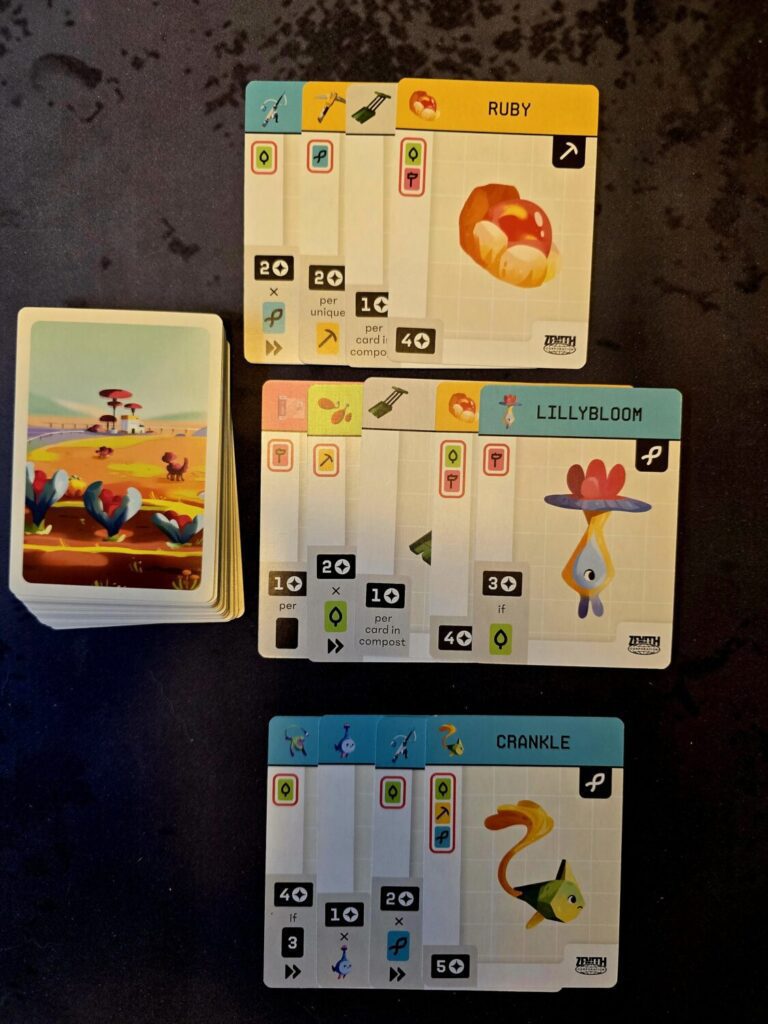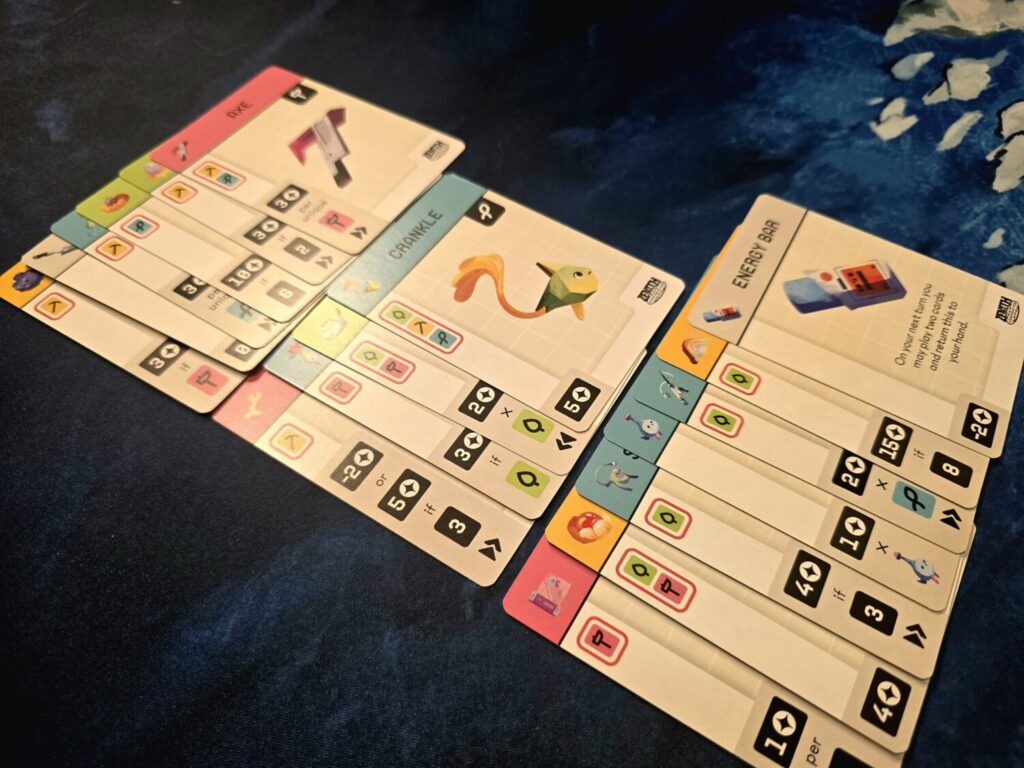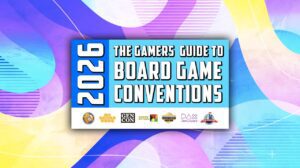Disclosure: Meeple Mountain received a free copy of this product in exchange for an honest, unbiased review. This review is not intended to be an endorsement.
Shiny Shiny
IV Studio had one of the best—if not the best—aesthetic booths at Gen Con this year. The exhibit hall booth looked (and felt) like an Apple Store, while the room off the main hall had the vibe of a tech startup office. The flair and grandeur are also reflected in their games, like Moonrakers, Realm of Reckoning, Mythic Mischief, Veiled Fate, and Brink. Recently, IV Studio has branched out from gorgeous big-box productions to small-box games, but without losing any of their attention to detail or style.

Graft is a spinoff game set in the same universe as its big brother, Tend, designed by the trio Max Ander, Zac Dixon, and Austin Harrison. The box pops with color, and inside are cards with equal appeal—and a little extra fancy foiling, just because. The pitch of card combos mixed with a bit of push-your-luck calls to me like a lighthouse beacon.
Graft and Pass
Graft plays in turn order until the draw deck is empty, giving all players one final, equal turn. Players hold a hand of cards, pick one to play, and pass the rest to the left. Each card features a color suit, a scoring condition, and possibly a restriction on future cards that can be played. Cards are played left to right on top of each other in hopes of building a juicy line to ship off to the Zenith Corporation.

When a player decides to ship their line of cards, they must play one additional card to complete the sequence. Then a new line is started, locking in the previous one for endgame scoring. If a player cannot legally place a card in their line, they “bust,” dumping all cards from that line into the compost, which scores one point per card at the end. Players can also claim an achievement on their turn if their line meets the criteria listed.

Solid Shipment
Graft is a good time, a simple pick-and-pass card game that pushes players to build high-scoring tableaus. There’s a nice variety of scoring conditions that range from cards in the compost to the exact number of cards in a line to sets of differently named cards. There are so many scoring conditions that it’s almost easier just to play what you can legally and hope it pays off in the end. Trying to fit a line into multiple scoring conditions usually ends in a bust.
There are plenty of lamenting moments when a high-scoring line suddenly can’t be played, and it all gets wiped into the trash. Since it’s a drafting game, there’s some knowledge of what’s in the pool. However, there’s a dash of spice where all players draw back up whenever any player ships off their line. This can actually help others build further, but it can also be a lifeline when the selection gets slim and you might otherwise get stuck with a non-legal placement.

I liked the addition of item cards, which often score negative points but grant powerful actions that add some mitigation. Some of the iconography trips things up a bit—while the graphic design is clear, the explanations of a few scoring symbols aren’t fully fleshed out and can lead to confusion. Otherwise, the game is solid. It’s approachable enough to introduce to non-gamers, yet has enough depth to play strategically. Though the game leans more luck-based than not, it’s a nice filler for those who enjoy drafting with a bit of added risk on every card played. It plays great at any player count and has the kind of solid foundation that’s easy to recommend.










